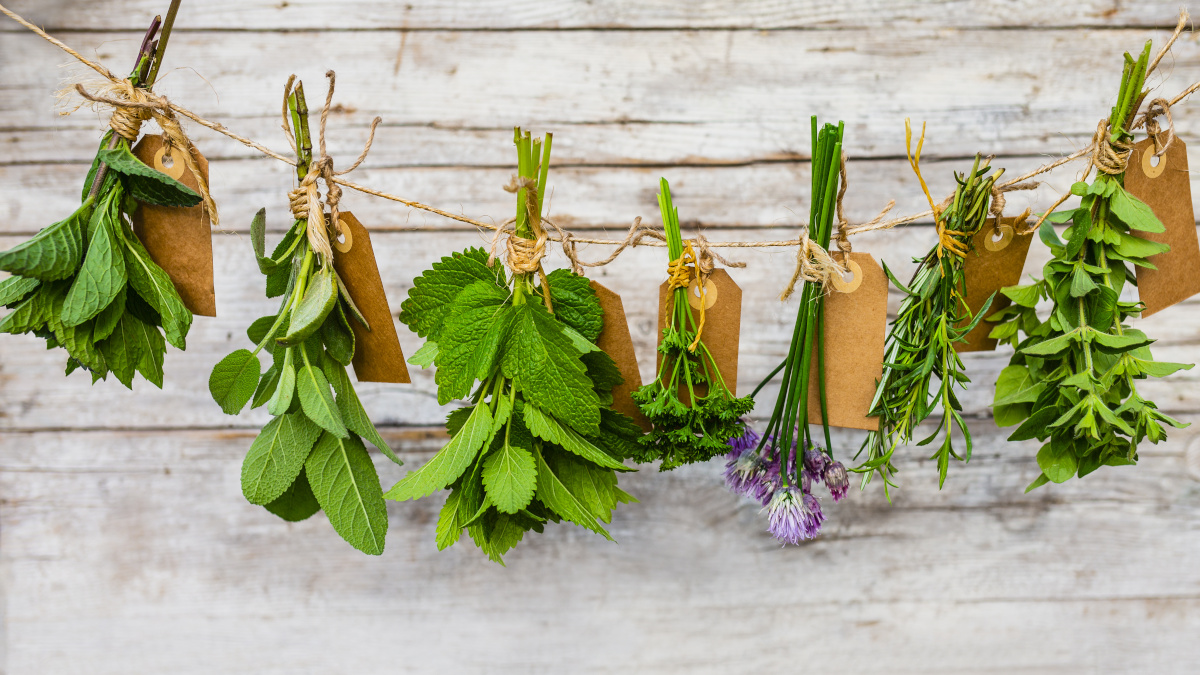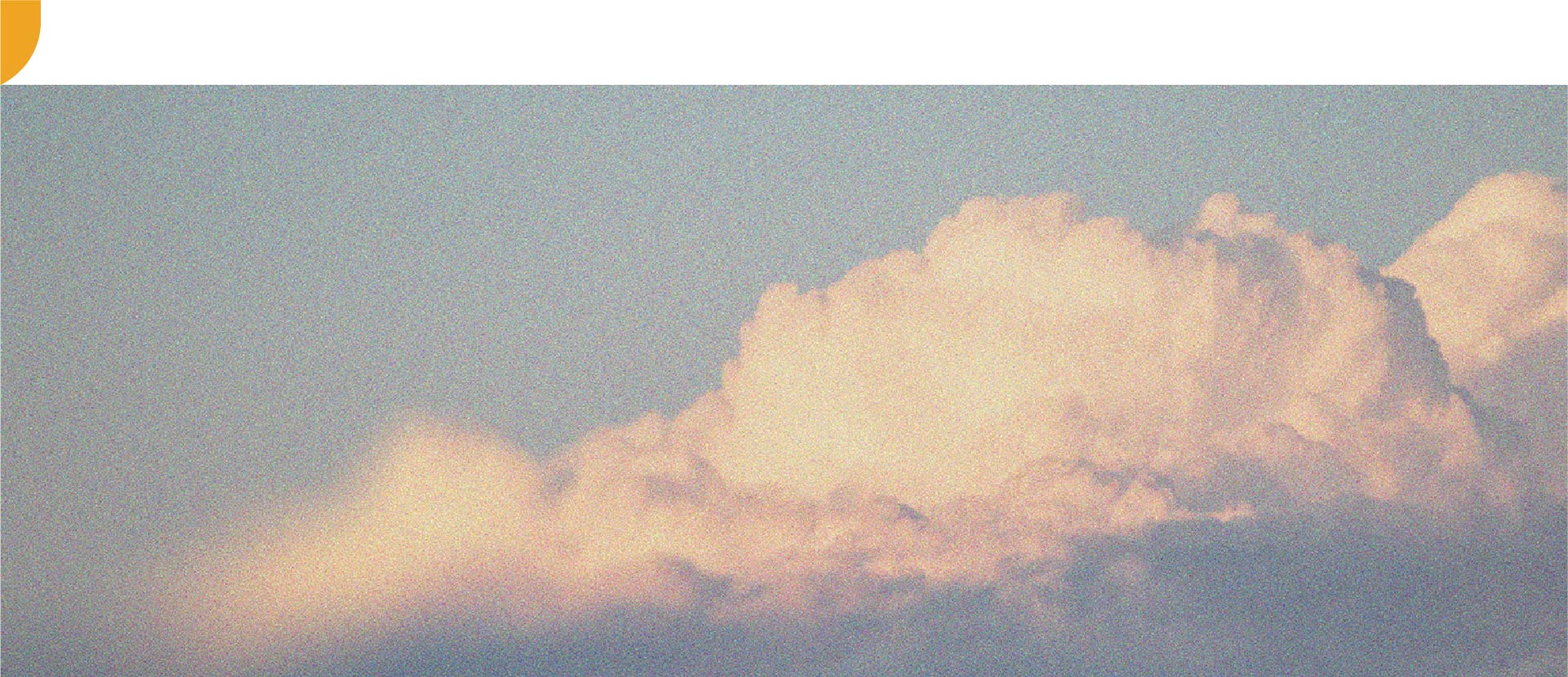The 10 best aromatic plants and their benefits for health
As well as adding flavor to our cooking, certain aromatic plants have positive effects on our well-being. Discover these highly-fragrant and health-beneficial plants.

Coriander and digestion
Anaromatic herb with a strong, distinctive flavor, coriander is widely used in Asia, in India and the East.
A few, finely-chopped coriander leaves add an intense, exotic flavor, perfect for spicing up a tagine or a goat’s cheese-based dish!
In terms of composition, coriander contains a high concentration of vitamin K, and with its anti-spasmodic properties, supports a healthy digestive system (1).
The action of thyme
A symbol of Provence, like rosemary and lavender, thyme is a highly-fragrant and perennial dwarf shrub.
In ancient Egypt, it was used in religious rituals, while in Rome, thyme was predominantly recognized for its purifying and repellent action.
Nowadays, thyme is one of our most popular culinary herbs, especially for flavoring summer meat dishes and barbecued food. It is the leaves of the plant which are normally used and which can also be found in the form of an essential oil.
Instant relaxation with basil
Like thyme and oregano, basil (Ocimum basicilicum) is part of the Lamiaceae family.
In pesto, antipasti... basil brings an Italian or Mediterranean touch to all kinds of recipes. It also supports digestive health and promotes relaxation (2).
Its close relative holy basil (Ocimum tenuiflorum or Ocimum sanctum), also known as tulsi, supports respiratory health, immunity, vitality and physical and mental well-being. To benefit from its properties, choose a formulation such as Adrenal Support (with a high tulsi content) or Adaptogenic Potion (which also contains a number of other adaptogen plants).
Nutrient-rich chives
Originating from the East, specifically Siberia, chives are one of the easiest plants to grow and eat.
Part of the same family as garlic, they’re perfect for seasoning crudités, salads and sauces.
Low in calories, they contain vitamin C with antioxidant properties, and good levels of vitamin K, which supports healthy blood and bones.
Mint and respiratory health
A star of the herb world, perennially associated with summer, mint, like rosemary, comes in several varieties: spearmint, peppermint, Moroccan mint …
It was used in ancient Egypt and Greece for helping to soothe intestinal problems.
Peppermint is the variety used most widely in phytotherapy. A hybrid of spearmint and water mint, it is mainly known for its soothing effect on the mouth and throat, its benefits for respiratory health and its antispasmodic properties. You can find peppermint in certain synergistic formulations (such as Organic Defense Mix and Digestive Enzymes).
The powers of chervil
A plant native to southern Russia, we have the Romans to thank for bringing chervil to Northern Europe.
In the Middle Ages, chervil leaves were used for their appetite-stimulating and diuretic (urine-increasing) properties.
Composition-wise, chervil contains vitamin C, provitamin A and vitamin B9, as well as numerous minerals and trace-elements. It supports digestion by stimulating stomach and gut secretions. It is used raw in recipes as it loses its taste when cooked.
Parsley, a much-loved herb
First consumed more than 5000 years ago, parsley is undoubtedly one of the most widely-used aromatic herbs in the world.
Very easy to grow, parsley contains iron, vitamins C and K as well as potassium.
Considered sacred by the Greeks, it is widely used in cooking to flavor sauces, mayonnaise and stock. It can also be consumed as a dietary supplement alongside other active ingredients with similar properties (it features, for example, in Alkaline Formula, a supplement rich in alkaline compounds).
Dill, for digestion and sleep
Dill is an excellent herb for adding flavor to soft cheeses, sauces, as well as salmon, potatoes and crudités.
A source of antioxidants, it also contains potassium and vitamin C.
Used for centuries as a medicinal plant, dill was mainly consumed as an intestinal antiseptic decoction. Its benefits for digestion, as well as relaxation sleep, and lactation , are still recognized today ...
Oregano, a medicinal plant packed with benefits
An essential herb for flavoring pizzas, oregano is widely found in the Mediterranean region, as well as in Asia and North America.
In ancient Greece and Rome, it was often used as a perfume, and was thought to have a purifying and preserving effect. Oregano contains a number of aromatic molecules including terpenes (3). It supports mental performance and promotes good gastrointestinal, cardiovascular, liver and immune health.
To increase your intake, choose a dietary supplement (such as Oil of Oregano, a potent essential oil of oregano).
Improve your breathing with sage
A medicinal plant in common use in the Middle Ages as it is today, salvia officinalis or sage, is a popular cooking ingredient for flavoring meat, stock and marinades.
Whether in an infusion, decoction or ointment, sage offers many health benefits too, particularly antiseptic properties.
It also helps maintain good digestive and respiratory health, as well as general well-being during the menopause.
The secrets of rosemary
Another Mediterranean plant, rosemary comes in several varieties, all of which have their individual composition and properties.
It is the plant’s leaves and flowering tops which are predominantly used in cooking, aromatherapy and phytotherapy. Rosemary contains flavonoids, phenolic acid and multiple aromatic molecules such as camphor and cineole, depending on the variety (4).
It can be consumed as an infusion or as a dietary supplement (such as Ursolic Acid, an excellent extract of rosemary leaf).
Lavender, a heady, soothing plant
Like rosemary, mint and thyme, lavender also comes in several varieties.
The ultimate symbol of Provence, lavender was made popular by the town of Grasse and the rise of master-perfumiers in the 18th century.
Though it is primarily used for its sweet, floral perfume, lavender is also known for its medicinal properties. In infusions or as an ingredient in ointments and balms, it promotes relaxation and drowsiness(5).
Lemongrass and its alcohols
Used for its mosquito-repellent properties, lemongrass is also popular as an aromatic herb in cooking.
There’s nothing better for adding an exotic, citrussy and mild, spicy tang to Asian dishes!
Lemongrass exists in various forms depending on where it’s grown: Java, Sri Lanka or India. It contains a number of aromatic molecules, including monoterpene alcohols with antiseptic properties.
The virtues of aniseed
With its distinctive and somewhat polarising flavor, anise or aniseed (Pimpinella anisum) is thought to have been in use as far back as the 6th century BC, and was also popular in ancient Rome.
In cooking, aniseed adds a flavor similar to liquorice, fennel or star anise to biscuits, meat or fish.
Composition-wise, aniseed contains sesquiterpenes, phenolic acid and essential oil. It supports respiratory and digestive health.
References
- Medicinal benefits of coriander (Coriandrum Sativum L) - U. Rajeshwari, B. Andallu
Published 2011 BiologySpatula DD - Peer Reviewed Journal on Complementary Medicine and Drug Discovery - DOI:10.5455/SPATULA.20110106123153 Corpus ID: 86309875 - Vasorelaxant and anti-platelet aggregation effects of aqueous Ocimum basilicum extract - Journal of Ethnopharmacology - Volume 125, Issue 1, 17 August 2009, Pages 157-162
- Composition and Antimicrobial Activity of the Essential Oils of Two Origanum Species
Aligiannis, E. Kalpoutzakis, Sofia Mitaku, and Ioanna B. Chinou - Journal of Agricultural and Food Chemistry 2001 49 (9), 4168-4170 DOI: 10.1021/jf001494m - Effects of in vitro gastrointestinal digestion and colonic fermentation on a rosemary (Rosmarinus officinalis L) extract rich in rosmarinic acid - Food Chemistry
Volume 271, 15 January 2019, Pages 393-400 - Effects of Lavandula angustifolia Aroma on Electroencephalograms in Female Adults with Sleep Disorders - Journal of Life Science (생명과학회지) - Volume 22 Issue 2 / Pages.192-199 / 2012 / 1225-9918(pISSN) / 2287-3406(eISSN)
Keywords
13 Days
A Product worth waiting for when not…
A Product worth waiting for when not available and then arriving as a surprise!
DOMINIC
15 Days
On time shipping
On time shipping
GEORGE Verne
17 Days
Ordering was easy and the product was…
Ordering was easy and the product was delivered with no problems. Appreciated that I was notified when it would arrive. Thanks!
MascarC
22 Days
Great customer service - responsive …
I ordered from them and my item was unavailable for sometime. I was super happy when they reactivated my order and shipped my item which arrived very quickly. Great customer service.
Ruth Rueter
23 Days
Super fast shipping
Super fast shipping
Donald Borling
26 Days
Reputable companysearch and the number of…
The research and the number of selection of products.
NAKHJAVAN Shervin
39 Days
The Anti Aromatase is a great product
The Anti Aromatase is a great product. You just need to have constant inventory. Recently this product has been out of stock.
GEORGE Verne
41 Days
Great help on chat
Great help on chat. Knowledgeable and friendly.
Jason Argos
44 Days
Customer service was fast and friendly.
Customer service helped to stop the transaction process of the subscription. I appreciated that.
Greenie
45 Days
I order here due to the high quality of…
I order here due to the high quality of the products and the quick delivery of items - thank you
Barbara J
46 Days
SuperSmart's Eye Pressure supplements: highly recommended!
I purchase SuperSmart's Eye Pressure supplements regularly for over 5 years, and gotta say they are truly a wonderful product for my Glaucoma. Highly recommended if you have eye pain from your Glaucoma.
D. Martinez
50 Days
Quick service
Quick service
MONELL
51 Days
Speedy service.
Speedy service.
ROSENTHAL Marvin
55 Days
Clear website- Efficient
Clear website. Excellent search engine and fast delivery!
Mohamad Hussein
57 Days
They have great products.
They have great products.
Vickie



